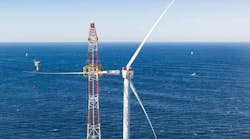The energy ecosystem is changing, reshaped by the emergence of distributed clean energy, increased competition from new technologies and service providers, evolving customer expectations, and new opportunities for serving those customers. As traditional business models evolve, electric utilities are seeking new opportunities for revenue as they establish themselves as the Preferred Energy Partner.
But getting there is another story. The future of revenue generation will become increasingly complex, requiring utilities to invest significantly in innovative products and services. With today’s renewable technologies, enhanced connectivity and mobile-optimized products and services, the opportunities appear limitless.
Seizing those questions, however, will prompt some soul-searching:
- Do you have a clear plan for how your organization will grow earnings?
- What is your strategy for addressing potential competition?
- What are your existing market solutions lacking?
- Is your organization well-positioned to explore new/alternative business models?
- What value does your organization place on innovation?
The answers are complex and multifaceted. Unsurprisingly, reliability and resilience remain top priorities and top of mind for all customer classes. Devastating natural disasters serve to remind us of how vulnerable our critical infrastructure can be, while faceless adversaries continue to exploit cyber vulnerabilities in this hyper-connected world we’ve created.
As traditional infrastructure is replaced or hardened and Internet of Things (IoT) solutions become closer to scalable reality, one final consideration tops all others: cost.
The tug of war between reliable service, innovation and cost is an ever-present reality for both investor-owned and municipal utilities. No one wants to see their electric bill increase, and many customers install solar and batteries or participate in demand-side management or energy efficiency programs, to mitigate these costs.
But as more customers move toward adopting distributed generation, the debate centers around who should bear the cost of maintaining central generation, transmission and distribution. Most customers still rely on a traditional utility to serve at least a portion of their daily energy demand, and nearly all require their utility to serve as a provider of last resort.
This means very little critical infrastructure can truly be retired — rather, as more advanced technology comes online, the grid must evolve to handle these changing load conditions.
To get there, utilities and regulators must work together to design rate structures that reward and mirror the cost associated with the time of demand, while reflecting the level of service a customer requires. The trick is to accomplish this without shifting undue burden to the utility.
These themes and many more are explored in Black & Veatch’s 2018 Strategic Directions: Electric Report.
Integrating Renewables
Utilities continue to embrace solar and wind power, but concerns linger over the potential for renewable energy’s uncertainty and variability to adversely impact today’s grid. Just a few years ago, the industry predicted the grid could only handle 30 percent of its power from renewables; today, we’re seeing integration on a much larger scale.
Non-Traditional Clients Impact the Grid
Maturing technologies and a growing emphasis on energy efficiency and sustainability are leading organizations to manage more distributed energy resources (DERs) than in the past. Armed with more flexibility behind the meter, industrial parks, colleges and universities, hospitals, military installations and government facilities are becoming increasingly energy independent.
Energy Storage Electrifies Renewables
Energy storage technology has been advancing for decades. As storage makes strides toward integrating electricity from any source into a more resilient and reliable grid, we are growing closer to fully understanding how storage can radically transform energy markets. Today, energy storage is proven and ready for business.
Utilities Work to Integrate Electric Vehicles
Last year, utilities were in planning mode as they worked to better understand aggregated charging; this year, we see the launch of pilot programs. As American interest in electric vehicles (EVs) grows, utilities need to ensure that the infrastructure can support this growing network of vehicles — from planning for increased load and charging, to taking steps to harmonize this need with grid operations.
A New Approach to Capital
Historically, capital allocation has focused primarily on replacing aging infrastructure; today, the game has changed, shaped by an influx of new technologies such as DERs, microgrids, EVs and energy storage. States are making momentous regulatory decisions that will significantly impact how utilities operate, forcing utilities to apply new thinking and address capital differently.
Construction Gets Innovative
Once famously slow to embrace technology, electric utilities are awakening to the power of innovation, deploying drones, employing robotics and implementing outside-the-box construction practices. As technology continues to reign supreme, power suppliers no longer have the luxury of resisting change.
Looking Ahead
A new kind of energy economy is emerging. Inspired by sustainability, cost-effectiveness, resilience and growing concerns over climate change, we are seeing some of the largest private and Fortune 500 companies pursue aggressive renewable energy goals as they flirt with grid defection. This sobering reality is making utilities question whether to significantly invest in green infrastructure in an effort to keep these large customers or watch them defect and take considerable revenues with them.
In this industry, which has long been viewed as moving at a glacial pace, such pressures should be a clarion call for engagement between utilities and the regulators whose constructs often lag behind advances in technology and customer expectations.
With regulators’ help, utilities must be nimble in making changes that align with growing clean-energy mandates. Failing to do so could not only drive away sizable commercial and industrial customers, but such defections would make the system more expensive by spreading its fixed costs among fewer customers and adding to the network’s complexity.
Making a meaningful difference would require utilities and the regulators who monitor them to reinvent their dynamic. Utilities must successfully balance what they’re able to do in a bureaucratic framework with being agile enough to adjust to a changing energy landscape. Conversely, regulators must have open minds and a deep awareness of DER trends and the consequences of when utilities are forced to watch from the sidelines as some of their largest customers set new courses.


